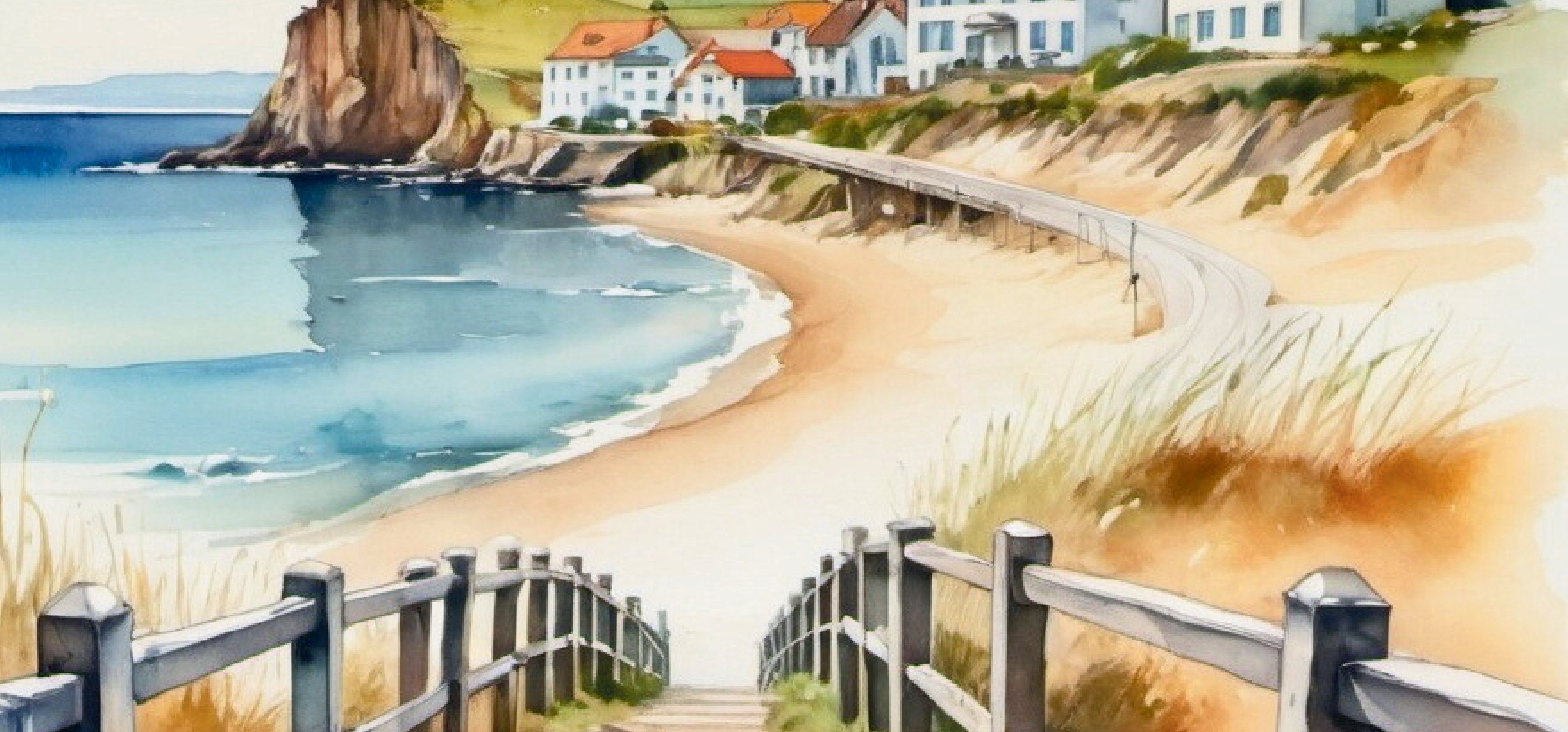
Jan 2025
Watercolor painting has captivated the art world for centuries. Its delicate, transparent color gradients, fluid transitions, and soft texture create an extraordinary, almost ethereal atmosphere. In traditional watercolor art, pigments are mixed with water and applied to paper, creating distinctive effects that are both unpredictable and unique. But with the advent of digital art techniques, the world of watercolor painting has also been revolutionized.
The question that now arises is: How does digital art bring the beauty of watercolor into the present day? And why does watercolor, even in digital form, remain one of the most popular and fascinating painting techniques?
In this blog post, we explore how digital watercolor art preserves the timeless beauty of the traditional technique while opening up new creative possibilities.
1. THE TRANSITION FROM TRADITIONAL TO DIGITAL WATERCOLOR ART
The transition from traditional watercolor painting to digital watercolor art was a natural evolution, combining the best of both worlds. Previously, artists had to rely on the limitations of paper and paints—every color choice and every brushstroke was permanent. In the digital world, however, artists can work with incredible freedom. Digital watercolor programs like Photoshop, Procreate, or Corel Painter offer an astonishingly precise simulation of traditional watercolor effects, while simultaneously allowing for infinite editing of works without making mistakes permanent.
The magic of watercolor painting remains intact even in digital form: the transparency, soft gradients, and vibrant colors created by the interaction of water and pigment are also palpable in digital art. Artists can use digital watercolor brushes to simulate the effect of flowing water, gradients, and smooth transitions—in a way that was previously only possible through years of practice with real paints and brushes.
2. THE MAGIC OF SOFT BRUSH STROKES AND THEIR DIGITAL REPRODUCTION
An essential component of watercolor art is the way the brush glides across the paper, leaving soft, flowing strokes. In digital watercolor painting, these brushstrokes are recreated with remarkable detail. Digital artists can add textures and structural effects that create the impression that the painting was created on real watercolor paper. However, the possibilities of digital watercolor art go even further: artists have control over color density, brushstroke strength, and blending ratios, resulting in even finer and more nuanced results.
Another advantage of digital watercolor art is the ability to change colors quickly and easily. When working with traditional watercolors, an artist must handle the colors carefully, as mixing water-based pigments can produce unpredictable results. In the digital world, however, colors can be effortlessly adjusted, remixed, and placed on different layers without the artist being bound by the original decision.
3. WATERCOLOR IN DIGITAL ART: A MODERN REINTERPRETATION OF THE CLASSICAL TECHNIQUE
Digital watercolor art hasn't replaced the traditional technique, but rather elevated it to a new level. The digital form allows the soft and transparent color transitions of watercolors to be reinterpreted in a modern context and to combine the traditional technique with innovative concepts. Artists can use digital watercolors to create scenes from nature, paint emotional portraits, or create abstract compositions—all with the ease and flexibility of digital tools.
The use of digital techniques also allows for the creation of new styles and experimental approaches. Digital artists can experiment with different layers, filters, and blending techniques to create complex, dynamic works that combine the timeless beauty of watercolor with futuristic, modern elements.
4. WHY WATERCOLOR ART IN DIGITAL FORM CONTINUES TO BE POPULAR
Digital watercolor art has become increasingly popular in recent years. Why is this? One reason lies in the versatility of the technique. With digital watercolors, artists can work in a virtually limitless variety, without the physical limitations of traditional materials. For collectors and art lovers, this means they can enjoy the beauty of watercolor in any form—be it as wall art, for digital designs, or in print.
Digital watercolor art also allows for wider accessibility. Artworks can be sold online, downloaded, and used immediately, making them available to a global audience. They're suitable not only for wall decoration, but also for digital media, websites, social media, or marketing materials—all without the cost and effort of physical printing and shipping .
Bring your digital art into reality!
Now that you've learned more about the fascinating possibilities of digital AI art, it's time to experience your favorite artwork in physical form. Explore our various printing options —whether on acrylic glass, photo paper, metal, etc.—and choose the perfect option to make your artwork shine.
Browse our product gallery , find the artwork that appeals to you most, and bring it to life in a high-quality print.
Do you still have questions? In our FAQ section, you'll find frequently asked questions and answers about AI art.
Discover, select and enjoy your art in the perfect form!
Conclusion
Digital watercolor art is a wonderful evolution of a classic technique that has been prized for centuries for its delicate beauty and emotional appeal. It preserves the magic of soft brushstrokes, smooth color transitions, and meditative quality that define traditional watercolor painting while bringing them into the modern world. With advances in digital art technology, artists now have the opportunity to create even more precise, detailed, and expressive works.
Whether for collectors, art lovers, or artists, digital watercolor art offers endless creative possibilities and remains a timeless expression of beauty, blending both traditional and modern elements. The gentle poetry of watercolor painting lives on today not only on canvas but also on screen—and will continue to be a fascinating art form in the future.
